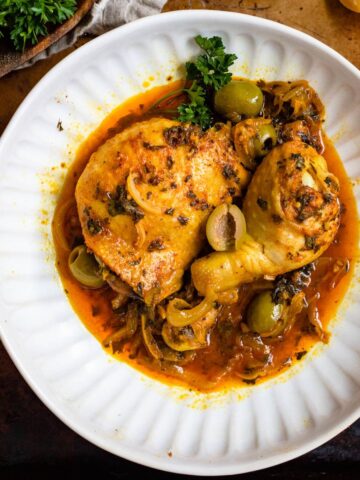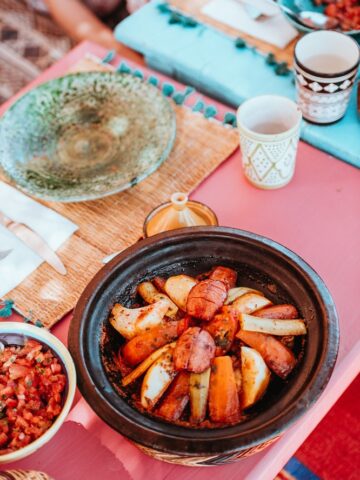Morocco Country Introduction and Recipes
Fun Facts
-
Morocco is home to the oldest university in the world, the University of al-Qarawiyyin, founded in 859 AD in Fez.
-
The country’s landscapes range from sandy deserts to snow-capped mountains and lush coastlines.
-
Traditional Moroccan homes, called riads, are built with beautiful inner courtyards and elaborate tilework.
-
Morocco’s famous blue city, Chefchaouen, is painted almost entirely in shades of blue.
-
The bustling markets, or souks, are known for their vibrant spices, textiles, ceramics, and jewelry.
About the Flag
Morocco’s flag is deep red with a green five-pointed star (the Seal of Solomon) in the center. The red symbolizes bravery, strength, and valor, while the green star represents peace, hope, and the connection to Islam. The simple yet powerful design reflects Morocco’s proud identity and rich history.
Influence on the Food
Moroccan cuisine is a reflection of Berber, Arab, Andalusian, Mediterranean, and French influences. Over centuries, Morocco’s location along trade routes brought in spices, dried fruits, and new cooking techniques. These influences merged into a cuisine known for its layered flavors, slow cooking, and generous use of spices.
Flavors of the Food
Moroccan food is a harmonious blend of sweet, savory, and aromatic flavors:
-
Spices like cumin, turmeric, cinnamon, saffron, and paprika are staples.
-
Preserved lemons and olives add brightness and tanginess to dishes.
-
Honey, dried fruits (apricots, dates, raisins), and nuts are often paired with meats.
-
Fresh herbs like cilantro, parsley, and mint are essential to many recipes.
Food Culture
Food in Morocco is deeply connected to hospitality and tradition. Meals are a time for gathering with family and friends, often around a communal dish like tagine or couscous. Special foods are prepared for religious celebrations like Eid al-Fitr and Eid al-Adha. Sharing food is an act of kindness and respect, and it’s common to be offered tea and snacks even by strangers.
Dining Style
Meals are typically shared from a communal dish, often eaten with the right hand and using bread to scoop up the food. Mint tea is served as a sign of hospitality and is often poured from a height to create a frothy top. In homes, people usually sit around a low table, creating a relaxed and communal atmosphere that emphasizes togetherness.



